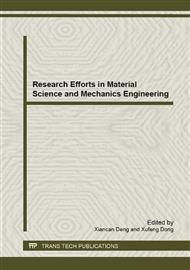p.175
p.181
p.186
p.191
p.195
p.200
p.204
p.209
p.214
The Choice of Coolants in Accelerate Driven System
Abstract:
The accelerate driven system has an important role in sub-critical reactor. With the good physical property of high specific heat, low vapor pressure, low thermal decomposition rate and so on, the glycerol, hydrogenated terphenyls and water of low pressure are widely used in the accelerate driven sub-critical reactor as the secondary coolant. Compare the three coolant by the aspect of heat economy and engineering safety, we conclude that, compared with the glycerol and the hydrogenated terphenyls, water of low pressure has the best heat economy, at the same time it has the lowest pressure drop and the highest coefficient of heat transfer in the heat exchange tube. Therefore, choose water in low pressure as the secondary coolant in sub-critical reactor can decrease the heat exchange area to a large extent, together with the advantage of economy and safe.
Info:
Periodical:
Pages:
195-199
Citation:
Online since:
April 2013
Authors:
Keywords:
Price:
Сopyright:
© 2013 Trans Tech Publications Ltd. All Rights Reserved
Share:
Citation:


